Radon Testing of Homes and Cottages
Radon is a radioactive gas and naturally breaks down to form decay products, called radon daughters. These can be inhaled deep into the lungs and damage lung tissue. Exposure to elevated levels of radon increases the risk of developing lung cancer. Your risk depends on the amount of time you are exposed to radon. Radon also increases the risk of lung cancer from smoking.
Radon seeps into a home from surrounding soil. It comes up through pores in the soil under homes and buildings through gaps and cracks in the foundation, concrete walls and floors, sumps, joints, basement drains and other openings. Unsafe levels of radon could accumulate in poorly ventilated homes and buildings.
Generally, a very small percentage of homes are found to have high levels of radon gas (Health Canada). Fortunately, there is a remediation procedure in place to help mitigate exposure. Detection is the first step. One method is the use of detectors which are pre calibrated and then placed in a structure, left for a specific time, then removed and read for variances in the amount of radon detected before and after. It is at this time the property owner can choose mitigation or not.
Mitigation is usually a procedure which removes the soil gasses from below the floor slab and exhausts them through the roof with the assistance of a fan
The City of Ottawa provides a radon detection kit, which may be purchased for a minimal cost. CMHC Canada produces a booklet RADON A Guide for Canadian Homeowers, # 61945 or you could call 1-800-668-26421-800-668-2642.
